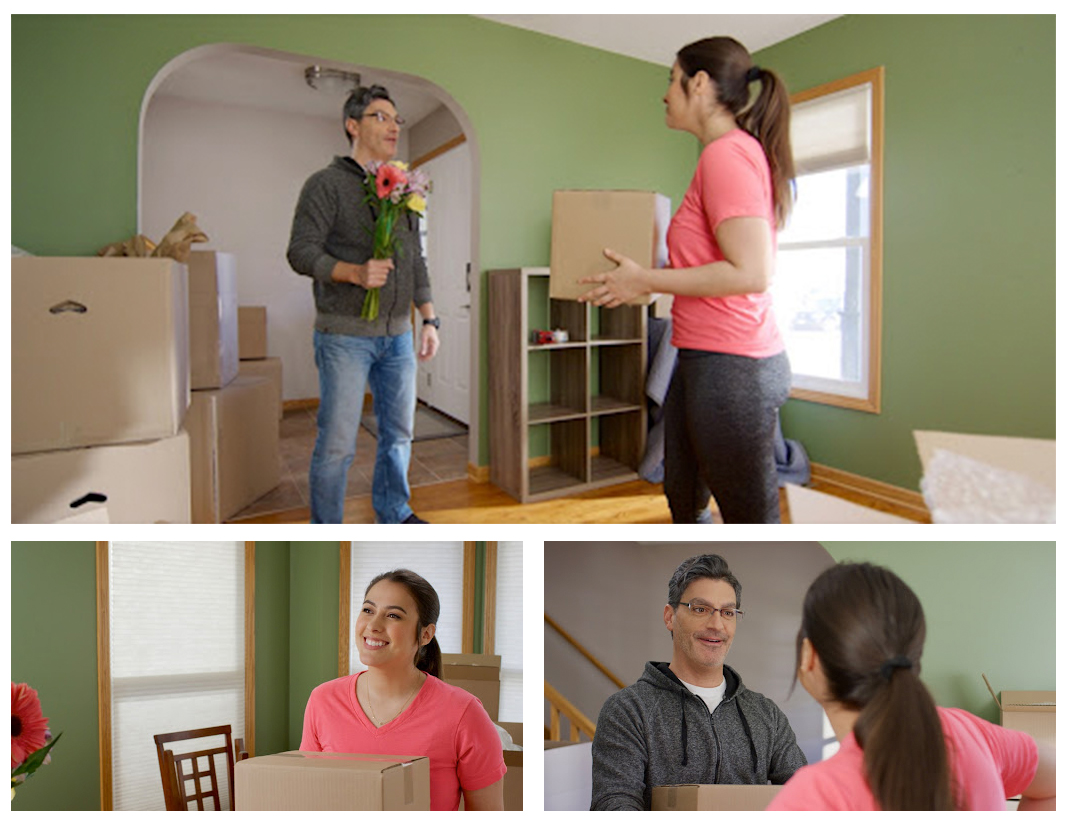Myth Busting: Five Lighting Myths
It’s no secret around the office that I love lighting. The way it cascades through our world inspires me. Over the past year I’ve been feeding this fixation, using everything at my disposal to further my understanding of this art.
As with any new skill there has been quite the learning curve, and with any skill worth learning there have been numerous headaches throughout the process. What light is best for this situation? Am I conveying the proper mood to tell this story? What would Roger Deakins say?
It’s enough to cast serious doubt in my mind, doubt that could easily dissuade me from reaching my full potential. But whenever I feel overwhelmed looking up the mountain I’m yet to climb, I take a step back to see how far I’ve come. I realize the valuable lessons I’ve learned and how I can expand upon them to further my understanding. It reignites a passion to push myself further and take my work to new heights.
Full disclosure, I don’t claim to be an expert on light, rather its humble student with hopes of becoming a better artist. An artist who tells stories with strokes of light in front of a lens.
Lighting Myth 1:
"Shoot in a room filled with natural light."
My first lesson may be obvious, but I quickly learned lighting is all about control. I realized the old lighting myth that shooting in a room filled with natural light isn’t always best. Don’t get me wrong, some natural light in your frame can go a long way, but the sun isn’t something you can control, only manipulate. This is especially true when shooting interviews, or scenes where a consistent look is key.
For example, say you set up an interview that uses the sun as your main light source. That big glowing ball in the sky can be a beautiful light source if used properly, but something out of your control are the clouds that may move in front, which reduces the visible light. Where you run into issues is when these clouds decide to block the sun mid take. You’ll lose proper exposure on your subject, forcing you to either wait for the sun to return, or adjust your exposure in camera. Not only that, but if you need to make a cut in the edit, it’ll be painfully obvious because your first shot won’t match the second. To save yourself from headache, I suggest blocking the sun from your room and relighting, or at the very least shading your subject and relighting them so their exposure remains consistent.
I’ve taken the liberty to pull some images from some of our recent work that helps exemplify my points. In this first image, my main objective was to properly expose our subject’s skin without overexposing the highlights seen through the front door. While I didn’t physically block out light with anything, I did lay a neutral density filter (think sunglasses for your camera) in front of my lens. This effectively blocked the sun out of my shot leaving the need to relight.
On the left is an image that shows what our camera saw before adding supplemental lighting. I started by adding a powerful, sun emulating light (camera left) outside the family room window, shooting through a sheer curtain to soften the light on our subjects face. It looked fantastic and realistic, but left the right side of her face (and the rest of the room) underexposed. Utilizing a wide beam fill light (camera right) I brought up the levels in the rest of the room and on the right side of her face. For good measure I also put a light fixture in the hallway behind our subjects so they wouldn’t fall into darkness. In this example, we took the sunlight we already had and supplemented it.

Our next shot is an example of why it’s not always safe to rely on the sun staying consistent. Believe it or not the wide shot on the left isn’t using any supplemental lighting, only utilizing rays from that sweet life giver in the sky. I walked into this dining room and immediately proclaimed “I don’t need any lighting, this looks great!” I proceeded to shoot the wide shot and immediately regretted my decision, as when I prepared to move in for my tight shots, storm clouds moved in. With no end in sight I was forced to run to the van and throw up a light outside to emulate the sun (just like in our previous example.) Fortunately, our fake sun was more than convincing, and in the end there’s no way to distinguish the wide shot from the tight on the right.

Finally, I have two examples that were either shot at night or blocked the sun out entirely. Can you guess which is which? The image on the left was shot towards the end of twilight, it was nearly pitch black outside. Our issue however, was that we wanted the shot to appear as if it was day time with natural sunlight flooding the room (ironic, isn’t it?) To achieve this we shot a light at the blinds (from outside) behind our subject. We turned the blinds so we couldn’t see it was night out and then bounced a light inside to fill the rest of the scene. The inverse was true for the frame on the right. This scene was shot mid-day but I wasn’t a fan of how the light was coming through the window. I decided to block all of the natural light from the room and bounce a light from the windows original location (camera left) this gave the illusion that light was coming into the room, but I was able to dial it in to the exact amount I required.

So what did we learn? Well, if it’s not evident from my example, every situation is different and poses its own problems and solutions. Every myth has a hint of truth, and as I said previously lighting is all about control. As shown in some of my examples it’s possible to get a beautiful image with no lighting at all, but it’s up to you if you want to roll the dice with nature. It could turn out beautiful, or it could derail your shoot and force you to make compromises while simultaneously disrupting your schedule.
Myth 2:
"Lights cannot move once they are placed.”
When I was starting out as a student, I had a professor who was adamant that once your lights were set in place you COULD NOT MOVE THEM. Basically, he claimed when shooting with multiple scenes and angles your lighting can’t move between shots. That’s false. It’s true your lighting should remain fairly consistent throughout a scene, but that doesn't mean you can’t get creative and move your lights for different camera angles. In fact, sometimes you’ll need to move your lighting depending on the space you’re in. Take our most recent commercial shoot for example. When analyzing our establishing wide shot, you can see our frame is relatively bright with little contrast on our subjects. However when we push in to our OTS (over the shoulder) shots, you’ll notice a slight contrast on either side of our subjects faces. Due to the size constraints of the room we were shooting in, we needed to move our lighting equipment between angles. Whether this is the case or not, it’s considered acceptable to move some lights in, as well as moving negative fill (usually a big black board that blocks light) in on the fill side if the face in order to create contrast. I encourage you to rewatch some of your favorite movies and pay attention when they move from a wide shot to a closeup. Notice the additional contrast when they move in!

Myth 3:
“You want sun when shooting outside.”
Remember when I said lighting is all about control? Well, that still applies outside. In fact, it’s even more important in outdoor environments as they are even less predictable than shooting indoors. The main issue is that direct sunlight creates harsh, unflattering shadows. This can of course be mitigated by diffusing the sunlight and bouncing light or relighting where possible, but it’s just extra steps to keep in mind when shooting outdoors. Secondly, the sun is always on the move so you have to plan ahead, and then you’re on the clock come shoot time. You only have so many takes before it shifts and you need to make adjustments. In the end, your planning may be for nothing as it could be a partly cloudy day and the amount of light you have to work with could change by the second. Please don’t misunderstand me, shooting outside can be beautiful and should not be feared, but it’s important to know what you’re up against and to come prepared. Don’t expect a great shot just because you’re shooting outside. Major movies fly massive diffusion panels up on cranes just to protect their shots from the sun. While everything can be tailored to scale, shooting beautiful footage outside takes gear and man power.
Myth 4:
"You can use house lighting or the lighting available to you to shoot, you don’t need lighting!”
When I was in college, lighting took a back seat to nearly everything else. None cared to take the time to light their scenes properly and it showed. I look back at my collegiate work and cry out to my past self “why?" Why didn’t you care more? This doesn’t look believable, how would you sell anyone on this story if they don’t even want to look at it? It’s important to remember, a camera is just a tool that turns light into an image. Like an artist with paint on a canvas, a cinematographer paints their image with light. Anyone can set up a camera and take a photo, but to create something truly awe inspiring you need to understand how to control and bend light to your will. If you can control your lighting you can control your image, and you’ll be in control of your story.
Myth 5:
“Everything happens in camera.”
While it’s generally good practice to do everything practically and in camera, there are just some looks that you can’t achieve without post processing. Unless you have access to significantly higher budgets, better gear, and most importantly more time, it’s important to know how proper color grading can make the most of your footage. Best cinematography winners know this and are masters of both the photography and post production stages.
I don’t claim to have all the answers when it comes to lighting and I certainly have more to master, but I do know that I’ve learned a lot. I’ve learned that many of my past teachings and habits aren’t necessarily true, but aren’t completely false. As I said, every myth has a hint of truth to it, and as with everything in video there are limitless ideas and ways to do things. What I do know is that I’ve found a true passion and path to follow in video. It’s reignited my passion and I can’t wait to see what project I get to apply myself to next.




